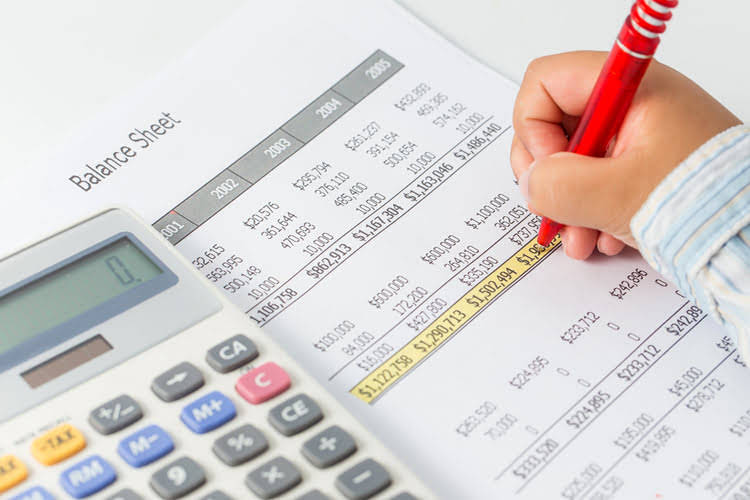
Community reviews are used to determine product recommendation ratings, but these ratings are not influenced by partner compensation. Now that we have the basic idea of the cost origins and how they are related to production, let’s drill down into the details. You should have receipts or records of improvements you plan to include in your ACB. But Mr. Minicucci said evidence in a photo may help support the claim that you made capital improvements. It can be an essential metric when comparing companies within the same industry and evaluating potential investment opportunities.
Optimized strategy for schistosomiasis elimination: results from marginal benefit modeling – Parasites & Vectors – Parasites & Vectors
Optimized strategy for schistosomiasis elimination: results from marginal benefit modeling – Parasites & Vectors.
Posted: Wed, 15 Nov 2023 08:00:00 GMT [source]
In the following year, the company produces 200 units at a total cost of $25k. The costs of operating a company can be categorized as either fixed or variable costs. When performing financial analysis, it is important for management to evaluate the price of each good or service being offered to consumers, and marginal cost analysis is one factor to consider. Marginal cost highlights the premise that one incremental unit will be much less expensive if it remains within the current relevant range. However, additional step costs or burdens to the existing relevant range will result in materially higher marginal costs that management must be aware of.
Formula Preparation
The firm’s production function tells us how much output the firm will produce with given amounts of inputs. However, if we think about that backwards, it tells us how many inputs the firm needs to produce a given quantity of output, which is the first thing we need to determine total cost. Marginal cost is the cost to produce one additional unit of production. It is an important concept in cost accounting as marginal cost helps determine the most efficient level of production for a manufacturing process.
It is calculated by taking the total change in the cost of producing more goods and dividing that by the change in the number of goods produced. The change in quantity of units is the difference between the number of units produced at two varying levels of production. Marginal cost strives to be based on a per-unit assumption, so the formula should be used when it is possible to a single unit as possible. For example, the company above manufactured 24 pieces of heavy machinery for $1,000,000.
Pinpointing the Change in Cost
When a company knows both its marginal cost and marginal revenue for various product lines, it can concentrate resources towards items where the difference is the greatest. Instead of investing in minimally successful goods, it can focus on making individual units that maximum returns. Cost pricing is a pricing strategy that sets the price of a product based on the total cost of production plus a markup for profit. calculate marginal cost If producing 100 sneakers costs $1,000 and producing 101 sneakers costs $1,010, the marginal cost of production for the 101st sneaker is $10. In cash flow analysis, marginal cost plays a crucial role in predicting how changes in production levels might impact a company’s cash inflow and outflow. Incremental cost, much like marginal cost, involves calculating the change in total cost when production changes.

While variable costs may initially increase at a decreasing rate, at some point they begin increasing at an increasing rate. This is caused by diminishing marginal productivity which we discussed earlier in the Production in the Short Run section of this chapter, which is easiest to see with an example. As the number of barbers increases from zero to one in the table, output increases from 0 to 16 for a marginal gain (or marginal product) of 16. As the number rises from one to two barbers, output increases from 16 to 40, a marginal gain of 24. From that point on, though, the marginal product diminishes as we add each additional barber. For example, as the number of barbers rises from two to three, the marginal product is only 20; and as the number rises from three to four, the marginal product is only 12.
What is the marginal cost formula?
Marginal cost is the change in the total cost which is the sum of fixed costs and the variable costs. Fixed costs do not contribute to the change in the production level of the company and they are constant, so marginal cost depicts a change in the variable cost only. So, by subtracting fixed cost from the total cost, we can find the variable cost of production. However, since fixed costs don’t change with production levels, the change in total cost is often driven by the change in variable costs. Marginal cost is the change in the total cost of production by producing one additional unit of output.
The first five columns of Table 7.10 duplicate the previous table, but the last three columns show average total costs, average variable costs, and marginal costs. These new measures analyze costs on a per-unit (rather than a total) basis and are reflected in the curves in Figure 7.8. Both marginal cost and marginal revenue are important factors determining the cost and selling price of the commodities to maximize profits.